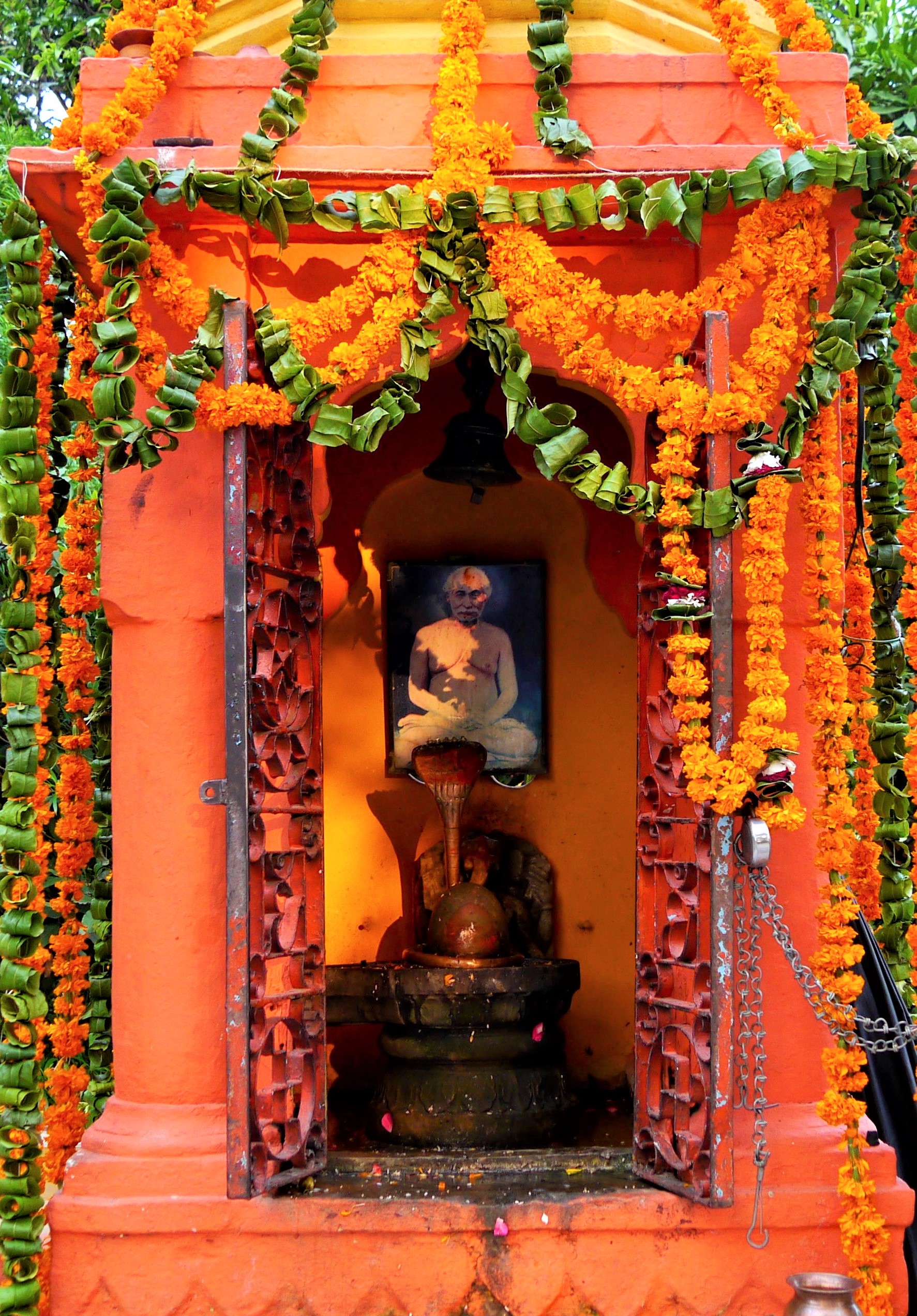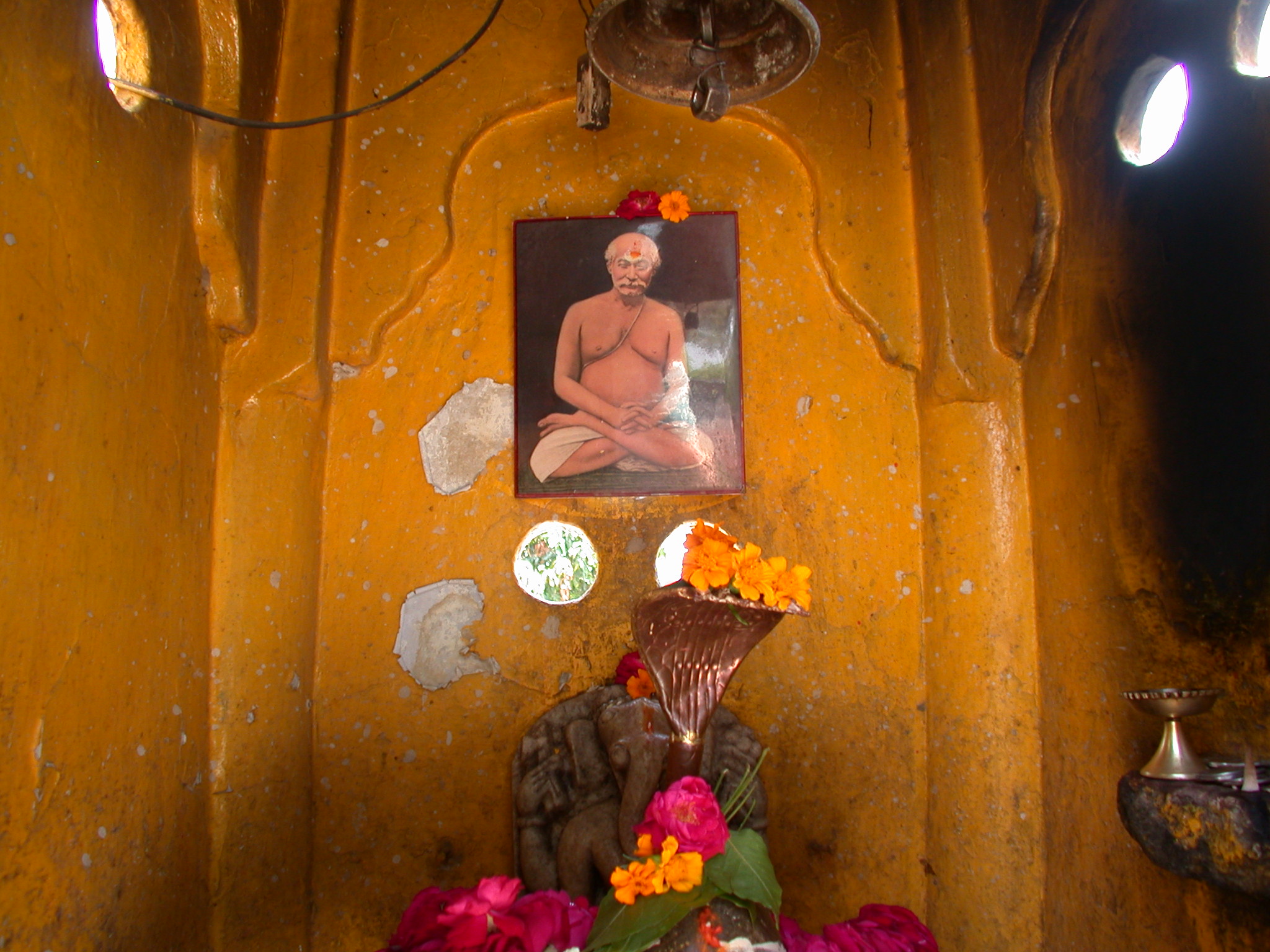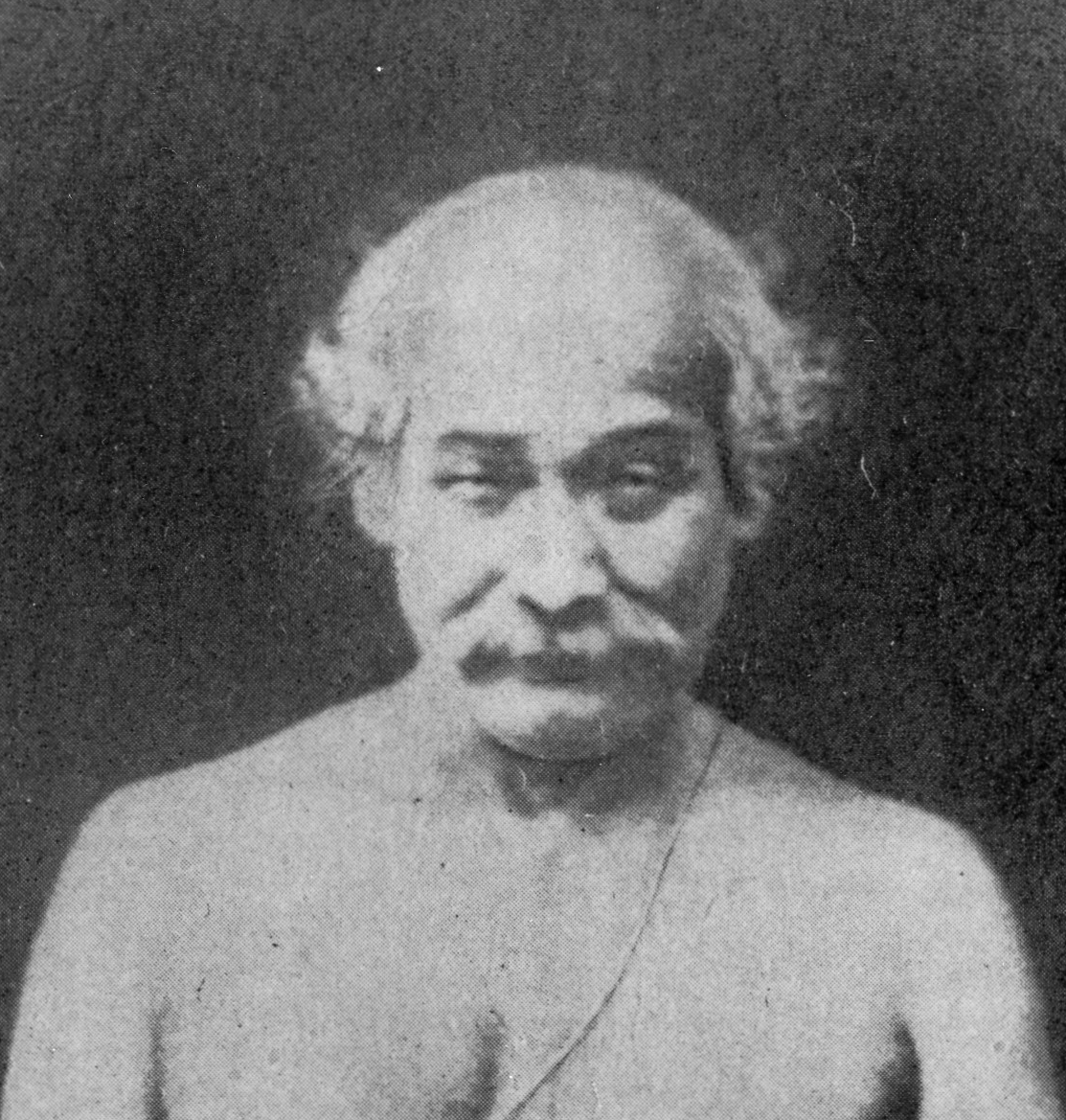 Before dawn we were off to the New Delhi train station for our journey to Haridwar. Haridwar is an ancient pilgrimage site for Hindus where the Ganges tumbles out of the Himalayas and flows out into the flat plains and eventually disgorges into the enormous Bay of Bengal.
Before dawn we were off to the New Delhi train station for our journey to Haridwar. Haridwar is an ancient pilgrimage site for Hindus where the Ganges tumbles out of the Himalayas and flows out into the flat plains and eventually disgorges into the enormous Bay of Bengal.
Over a hundred years ago Swami Keshabananda, exalted disciple of Lahiri Mahasaya, established an ashram there. Our pilgrimage to Haridwar coincides with the Mahasamadhi anniversary of Lahiri Mahasaya.
God is ever testing his devotees to “be in the world, but not of it.” The porter who grabbed our bags and took them to the train wanted 650 rupees, an exorbitant sum for such a service. I asked around and found a reliable source who said 50 rupees was about standard, although it could vary.
Entering the train car he deposited our largest case above the seat and demanded his ransom. Offering him the 50 r. note, he argued and feigned walking out of the car, trying to make us believe he was so insulted by this amount it was not worth taking. “The game was afoot!” I always want to pay what is reasonable, but not respond to extortionate greed.
Once I was negotiating with an auto-rickshaw driver, he demanded twenty thousand rupee to take me to my destination. Having asked fellow riders before departing from the train I knew that the amount should be about 20 rupee. I told him that I was not asking to buy his auto-rickshaw, only to get a ride in it! He laughed and I offered 20 rupee, and with a wobble of his head he answered me, “Ok.”
Delhi is different; these porters are known to be aggressive. After he feigned walking away he returned, I offered 70 rupees, he lowered his demand from 650 to 200, I handed him 100, which he took, and he walked away in a huff. With Westerners, many people in service here have learned that whatever they ask will be paid, after all, as a foreigner how would you know any different? However, when you are called on your bluff, why continue to make it a difficult situation; there is no joy in the interaction. Immediately after an Indian family boarded with four porters, and a similar verbal tussle ensued. After paying 500 rupee for the four porters they left in a similar state of apparent unhappiness.
Life is not meant to be lived in such a way. There is nothing wrong with negotiating for a wage and asking for what you want, however when there is no expressed joy in the interchange then the participants are left feeling worse off for the service. All service, whether it is for seva only or in exchange for money, should be saturated with love and joy. In this way both the giver and the receiver are enriched by the experience.
There are many sorts of poverty, but to be devoid of joy and the love in the service of your fellow man is one of the worst forms of poverty known to humankind; it is a poverty of the soul. It is a challenge to the devotee to hold your ground for what is reasonable, but not get caught up in the drama of emotional blackmail that is designed to make you feel uncomfortable and therefore yield to the coercion; to remain joyful in all circumstances.
Finally we are on our way in the train. There is something quite wonderful about the rocking and rolling of a train and the clickity-clack of the rails below. The scenery changed from rough and tumble buildings and strewn trash that lines the railways in town to neatly tended farms dotting the countryside. Four hours of progress, the last hour going backwards, takes us to our destination.
Upon arriving at the Haridwar station the normal din of activity is all about, and we are approached by those who would provide taxi or auto-rickshaw rides, but our first order of business is to buy return tickets. Standing at the window for reservations suddenly all three clerks behind heavily barred windows disappear. It seems it is lunch time and while the other patrons will wait patiently for the one hour break, we decide to move on to Anandamayee Ma’s Ashram where we have reservations to stay.
A pleasant looking gentleman is standing near us and I ask him what I should pay for an auto-rickshaw ride to Ma’s ashram. He asks a few questions and tries to call the phone numbers we have been given for the ashram, but no answer; he thinks some numbers are missing. He so lovingly takes us in hand, guides us out to an extended version of an auto-rickshaw, bargains with the driver for us, writes down the rickshaw number and name, and tells us to pay the driver 100 r. when we arrive.
My heart is overwhelmed with this “stranger’s” sense of hospitality for us, for his selfless service to “God’s little children” who have come without arrangements. I tell him a heartfelt, “God bless you,” and he smiles so sweetly and pronams to us. We feel so blessed by the Master’s who have come in the form of this wonderful soul; may he truly be blessed for his wonderful kindness of heart.
In Delhi we had been in taxis, but now in the auto-rickshaw we feel more part of the fabric of the town. The smells, sights, proximity of people are so tangible. One of the unique aspects of India is the smell. At its best it is a combination of the spices, the sweet smell of burning dung in the air and a combination of thousand thousand smells that is the signature of being in India.
The auto-rickshaw is a three wheeled contraption that runs on a tiny two stroke engine; the single front wheel can make the vehicle turn within its own diameter, which makes it very flexible. The spatial sense for drivers in India is remarkable, one scene after another of auto-rickshaws, pedestrians, cars, cows, pigs, dogs and lorry’s all compete for space and movement and are within inches of one another, with bumpers that read, “please honk!” For honking is not an angry form of communication here, rather it is saying, “I am passing you, be aware,” or “I am beside you, don’t move further over!” And so on. It all adds to the sense of complete pandemonium of traffic here as the auto-rickshaw takes us on main roads and alleys through a confusing maze.
Even though it seems there are no rules to driving here, really there are definite rules of the road, only just very different from Western sensibilities. It is true for both personal space as well as vehicular space, if there is an inch of empty space between you and the next person or vehicle, then that is considered wasted space, and therefore space to be utilized.
I remember my father reprimanding me as a child while standing in line, saying, “Give some space to those people in front of you,” this was considered being polite. If I had been raised in India, my father would have given me a wave of the hand indicating get in closer, you are wasting space and besides someone will just move in front of you if you leave extra space. It is diametrically opposite values and takes some getting used to.
We arrive at Ma’s Temple site and we immediately feel the difference. The hotel in Delhi was nice, but filled with a business class of Indians and the energy that brings. When we enter the rooms here there is a spiritual vibrancy immediately noticeable; like arriving home. Anandamayee Ma’s pictures are everywhere, her beauty inside and out is evident in the images of her great incarnation.
After being settled we are anxious to go to Keshavashram. We once again enter the precincts of this holy ground, after an eight year absence, where both Babaji and Lihiri Mahasaya have blessed the ground. A profusion of garlands and scattered petals are signs that this a special day, the Mahasamadhi anniversary of Lahiri Baba. Like a magnet we are drawn directly to his Samadhi temple on the grounds; a small structure about 12 feet tall that contains some of the ashes of the great master.
At the time of Lahiri Mahasaya’s passing he had requested his wife that he be buried, not cremated. In India children under seven and swamis are buried, all others are cremated. In her grief she did not remember his request, but only after his cremation did she remember. Swami Keshavananda knew his Master was getting ready to shed his mortal coil and was getting ready to embark on the long journey to Benares. Lahiri Mahasaya physically manifested before Swami Keshavananda to tell him not to hurry, he had already departed his physical frame. Our guide at the ashram tells us that the very Ashok tree standing here is where Lahiri Mahasaya appeared to Swami Keshavananda. The Swami did go on to Benares and returned with some of the ashes of his master’s cremated body. He then built this small temple in honor of his spiritual Master.
Meditating in front of the Master’s Samadhi Temple we felt his Presence glowing and shining upon us. Flocks of parrots flew by, and a smaller bird seemed to take an interest in us. He landed on a nearby wire, then hopped to the ground and chirped and frolicked in front of us. As sometimes happens, it seemed that the bird’s activities were not unconnected with our being there in honor of the Master. Animals often times respond to devotion in uncanny ways, and great Masters will even occasionally manifest as an animal, or any form in order to enact a play with devotees. We felt bathed in the spiritual vibrancy of these hallowed grounds.
We toured the grounds and observed that they have made improvements in the garden, looking very nice. However, back by the sacred rudracksha and banyan trees, that in the past had been a scene of worship, now was being used as a garbage dump; how strange, and how instructive. That, what at one time was sacred ground can become a dumping ground for the garbage of life. This can happen to a piece of property, and it can happen to a person when sadhana is not maintained at its proper intensity.
When we checked in at Ma’s ashram, Dr. Ghosh of International Center, recommended that we see a lady saint, Rani Ma, who lived at Keshavashram for ten years without leaving the grounds. She now has an ashram of her own and he said he would contact a driver who knew how to get there. That driver was not available, so there was a long conversation between Keshab, the lovely man who runs the day to day workings of this devotee hotel, and the taxi driver. A long conversation usually does not bode well for arriving at the right place in India, but we set off in anticipation of meeting the saint.
From Keshavashram we drive for some distance toward Rishikesh and finally we enter into some very many narrow streets. Parked cars leave just enough space for our Toyota SUV to pass with our mirrors pulled in. The ability of the Indian driver to “thread the needle” of these streets is breathtaking.
At times the driver looks to us to see if we are going to the right place, and with some concern we assure him we have absolutely no idea of where we are at, much less where we should go! With some stopping to ask for directions we at last come to the gates of Rani Ma’s Ashram. We are led through quaint gardens where we remove our Chappals, shoes. We are led through narrow sidewalks and finally to a small courtyard where the saint is seated. She is surrounded by a couple dozen devotees, women on one side and men the other. We take our seats.
A pleasant man sitting next to me takes an interest in us, we being the only Westerners in attendance. He offers to introduce us, for some reason the name Carla is difficult for many Indians to pronounce, I think it may be the placement of the r; Kali come easily, but Carla is difficult. He proceeds to sit next to Rani Ma. From our arrival I can see she has something, and a kind of spiritual power is coming out in waves. She speaks no English, and appears to be averse to looking straight at me, perhaps a natural sense of reserve.
We are invited to come forward and have her darshan. When I sit in front of her, her legs are stretched out but I am told not to touch her feet. She is dressed in a new sari, a tiny woman she looks to be swimming in gold trimmed cloth. She looks off to the side, never directly at me. She appears to be quite old, but clearly she has a lively mind and presence.
I tell her we have come for her blessings. The interpreter translates, “I have no blessings to give; Bhagwan has already blessed you.” After some time of sitting with the saint we take our leave, feeling blessed by her presence. Our kind interpreter guides us to an area to take some Prasad made by a joyful lady devotee there. Our guide tells us he has been seeing Rani Ma for over ten years. He said, “I have been getting older, we have all been getting older, but Rani Ma does not get any older. She is known to be over 100 years old, but no one knows for sure how old she is.”
There are small red lights that decorate the path going back out of the garden area, taking us out into the black night. Here, in this simple ashram God has taken us to the heart of India. The display of a natural love for saints, and the desire for their darshan and blessings is in the heart-blood of spiritual India.
These devotees have an unaffected relationship with Rani Ma, speaking with ease, laughter and naturalness that makes the idea of walking and talking with Jesus, or Buddha as natural as being with the best of friends. This world would be manifestly better if there were this kind of natural love and regard for saints exhibited everywhere. The blessings that flow from them are a boon of inestimable value for a world drowning in separation from self, Self and from God. Surely, with this love for saints their blessings flow even more abundantly to one and all. Rani Ma’s words ring still, Bhagwan (God) alone bestows the blessings, and all that is to be given has already been given.”



